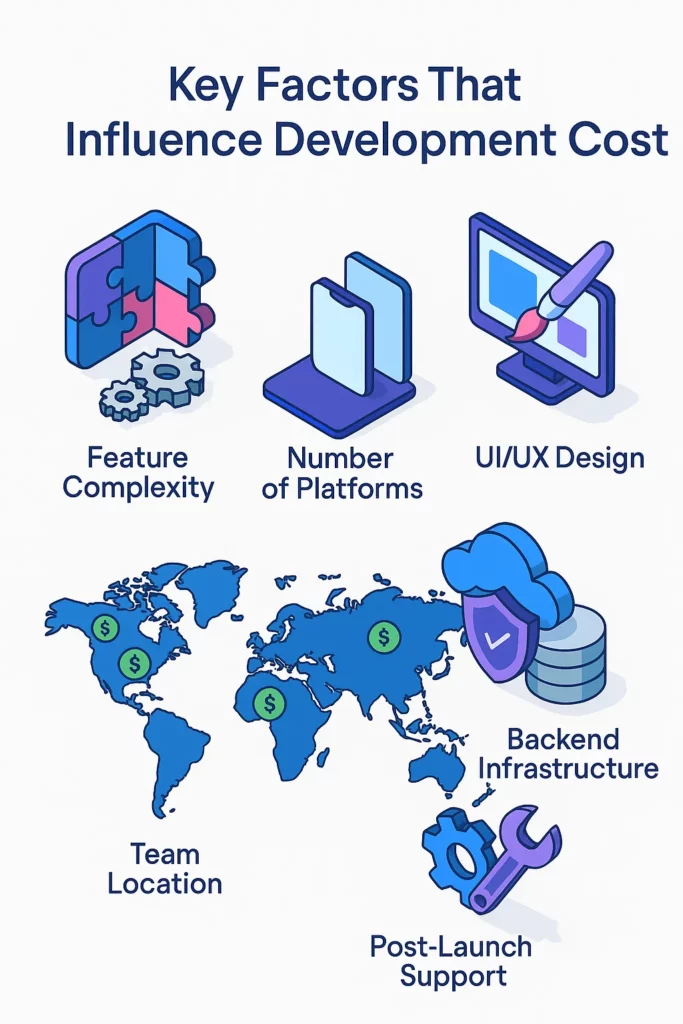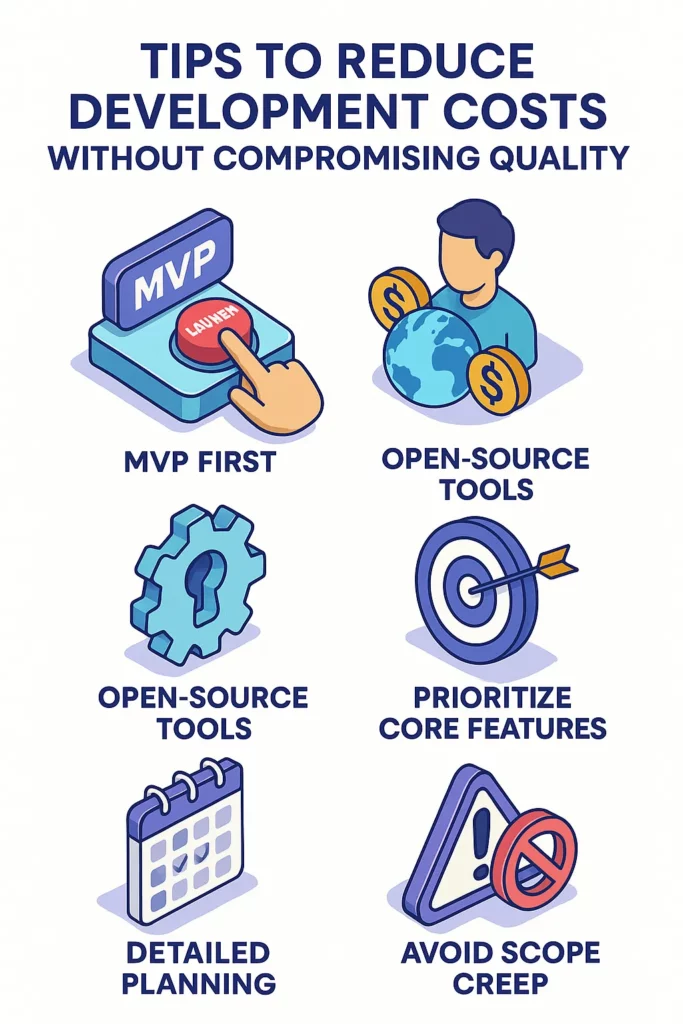Pinksale Token Platform Development Cost & Budgeting Insights
Create a powerful, customizable token sale solution with Miracuves’ Pinksale Clone, equipped with high-performance features and next-gen technology.
If you’re planning to launch a token sale platform like Pinksale, one of the first questions you’ll likely have is: “What’s the development cost?”
The answer isn’t simple—it depends on a variety of factors, such as the features you need, the scope of your platform, the technology stack you choose, and whether you’re building from scratch or customizing a white-label solution.
In this article, we’ll break down the key cost drivers behind developing a platform like Pinksale. We’ll compare the cost of an MVP (Minimum Viable Product) versus a full-featured platform, and provide insights to help you make informed budgeting decisions. Whether you’re a founder, a startup, or a blockchain-focused SaaS agency, you’ll find everything you need to understand the costs involved in building a token sale platform.

Factors Influencing Development Cost for a Token Sale Platform
There’s no one-size-fits-all price tag when it comes to developing a platform like Pinksale. The total cost depends on several critical factors that influence both the time and resources needed for development. Here’s a breakdown of the biggest cost drivers:
Feature Complexity
The complexity of the features you integrate plays a significant role in determining development costs. A basic token sale platform might include essential functionalities like creating token sales, processing payments, and tracking transactions. But if you plan to offer advanced features such as automated KYC/AML verification, customizable tokenomics, integrated liquidity pools, or multi-currency support, the costs will rise accordingly.
Platform Scope
Are you targeting a global user base, or is your platform focused on specific regions or markets? Expanding the platform to support multiple languages, regions, and token standards (ERC-20, BEP-20, etc.) will require additional resources and increase the overall cost.
Tech Stack and Blockchain Integration
Choosing the right technology stack and blockchain network (Ethereum, Binance Smart Chain, Polygon, etc.) is crucial. The complexity of blockchain integration, smart contract development, and testing will impact the development cost. Whether you’re opting for a custom blockchain solution or leveraging an existing network, the cost and time required will vary.
UI/UX Design
The user interface (UI) and user experience (UX) of your platform significantly affect its development cost. A basic, template-driven UI will cost less than a highly customized, sleek design with advanced functionalities and an intuitive user experience. For a platform that’s handling financial transactions, investing in a seamless and attractive UI/UX can greatly improve user retention and engagement.
Development Team Location
The location of your development team has a big impact on the cost. Hourly rates vary greatly depending on where your developers are based:
North America: $100–$200/hr
Western Europe: $80–$150/hr
Eastern Europe: $40–$80/hr
India & Southeast Asia: $20–$50/hr
Many startups opt to work with offshore teams, as this can help reduce costs without sacrificing quality.
Estimated Cost by Platform Type: Token Sale Platform Development
To help you map out a realistic budget, here’s a breakdown of typical development costs based on how feature-rich your token sale platform needs to be—from a lean MVP to a full-scale solution.
|
App Type
|
Estimated Cost Range (USD)
|
Description
|
|---|---|---|
|
MVP (Minimum Viable Product)
|
$8,000 – $15,000
|
Core features like token launch, sale rounds, basic admin, wallet connect, and smart contract integration.
|
|
Standard Version
|
$15,000 – $30,000
|
Adds vesting schedules, KYC integration, multi-token support, and improved dashboards.
|
|
Full-Featured App
|
$30,000 – $50,000+
|
Includes advanced features like liquidity locks, multi-chain deployment, staking modules, real-time analytics, and audit panel.
|
Region-Wise Development Cost Comparison
Where you choose to develop your Pinksale token sale platform can significantly affect your overall budget. Developer hourly rates differ greatly by region, and many startups save costs by working with offshore development teams while maintaining high-quality output.
|
Region
|
Hourly Rate (USD)
|
Typical Cost for Standard App
|
|---|---|---|
|
North America
|
$100 – $200/hr
|
$100,000 – $200,000+
|
|
Western Europe
|
$80 – $150/hr
|
$80,000 – $160,000+
|
|
Eastern Europe
|
$40 – $80/hr
|
$40,000 – $90,000+
|
|
India & Southeast Asia
|
$20 – $50/hr
|
$20,000 – $60,000+
|
Why many startups choose offshore teams (especially in Asia or Eastern Europe):
Access to fintech-skilled talent at lower rates
No compromise on code quality or compliance
Faster development cycles due to round-the-clock progress
Partnering with the right offshore development company can help you stretch your budget while accelerating time-to-market — ideal for bootstrapped or seed-stage startups.
Cost Breakdown by Development Stage
Understanding how your budget is allocated across different stages of development helps you plan effectively and avoid unexpected cost overruns. Here’s a typical breakdown of how the total cost for developing a token sale platform is distributed:
|
Development Stage
|
Estimated % of Total Cost
|
Includes
|
|---|---|---|
|
Discovery & Planning
|
5–10%
|
Market research, competitor analysis, defining user personas, feature scoping, technical requirements.
|
|
UI/UX Design
|
10–15%
|
Wireframing, prototyping, responsive design, visual branding, user experience mapping.
|
|
Frontend & Backend Dev
|
40–50%
|
Core feature development, database architecture, APIs, payment integrations, dashboard and logic build.
|
|
Testing & QA
|
10–15%
|
Manual and automated testing, bug fixing, device/browser compatibility checks, performance tuning.
|
|
Deployment & Launch
|
5–10%
|
App store submission (Android/iOS), server setup, production deployment, performance monitoring tools.
|
|
Maintenance & Updates
|
10–20%
|
Post-launch bug fixes, new features, server maintenance, user support, compliance updates.
|

Tips to Reduce Development Costs Without Compromising Quality
Building a token sale platform like Pinksale doesn’t have to break the bank. Here are some practical tips to help you reduce development costs while ensuring a high-quality, reliable platform:
Start with an MVP
Focus on the essentials first: token creation, smart contract integration, transaction processing, and basic user management. Launching a lean MVP allows you to quickly test your idea, gather feedback, and iterate, without overspending upfront. You can always add additional features as your user base grows.
Partner with Offshore Experts
Working with experienced offshore teams can cut development costs significantly—by up to 50% or more. The key is choosing a partner with expertise in blockchain and token sale platforms, ensuring that quality and communication are never compromised. A skilled offshore team can deliver the same results as local developers but at a fraction of the cost.
Leverage Open-Source Tools & Frameworks
There’s no need to reinvent the wheel. Using open-source libraries, frameworks, and tools can save both time and money. These tools are often well-tested, widely supported, and can be integrated with your platform seamlessly. For example, you could use pre-built solutions for payment processing or blockchain integration to expedite the development process.
Prioritize High-Impact Features
Avoid the temptation to add too many bells and whistles in the early stages. Focus on features that will have the most impact on user acquisition, security, and transaction processing. Features like multi-currency support or advanced analytics can be added later as the platform grows.
Plan Everything Before You Build
Proper planning is essential for controlling costs. Define a clear project scope, create detailed wireframes, and ensure everyone is aligned on feature requirements. This reduces the likelihood of scope creep and unexpected changes during development, which can lead to budget overruns. The more detailed your planning, the more efficient and cost-effective the development process will be.
Choose the Right Development Partner
Building a token sale platform is not just a technical endeavor—it’s a strategic business move. The development partner you choose will play a pivotal role in the success of your platform. Here’s what to look for in a development team:
Platform Expertise
Not all app development teams have the experience required to build a robust token sale platform. You’ll want a partner who understands the unique challenges of blockchain integration, smart contract creation, and tokenomics.
Scalable, Modular Architecture
While your token sale platform might start small, you’ll want to ensure it’s built for scale. Choose a development partner who designs with scalability in mind, so you can expand to multiple blockchains, integrate new features, or handle more transactions without starting from scratch.
Fast, Reliable Delivery
Time is of the essence, especially in the fast-paced blockchain space. A development partner with experience and pre-built frameworks can expedite delivery, cutting down the time needed to launch.
Ongoing Support
Development doesn’t end at launch. The right partner will provide continuous support, helping you monitor transactions, fix bugs, and integrate user feedback. After launching your platform, you’ll need to make iterative improvements based on real-world data.
Conclusion
Understanding the development cost for a token sale platform is essential for making informed budgeting decisions. Whether you’re focusing on a lean MVP to validate your idea or planning a full-featured platform to scale globally, it’s crucial to factor in the features, tech stack, region, and ongoing support that will impact your costs.
By focusing on high-impact features, partnering with the right development team, and leveraging open-source tools, you can keep costs manageable while delivering a secure, reliable platform. With careful planning and the right expertise, you can build a competitive token sale platform that attracts investors and developers alike.
At Miracuves, we specialize in building high-performance, scalable token sale platforms that are customizable, secure, and designed for growth. Whether you’re just starting or are ready to scale your platform, we provide the tech and expertise to help you succeed in the blockchain space.
Ready to take the next step? Explore our token sale platform development services or contact our team for a personalized consultation and cost estimate.
Frequently Asked Questions
A token sale platform allows businesses and projects to raise funds by offering tokens or cryptocurrencies to investors in exchange for capital. These platforms often integrate smart contract functionality, payment processing, and tokenomics management to facilitate and secure the sale process.
The cost of developing a token sale platform can vary widely based on the features you need, the technology stack, and the complexity of the platform. For a basic MVP, the cost typically ranges from $8,000 to $15,000, while a full-featured platform can range from $30,000 to $50,000 or more.
Yes, you can customize your platform to meet your specific business needs. Whether you need unique tokenomics features, custom security protocols, or multi-chain support, the platform can be tailored to your exact requirements.
The timeline for building a token sale platform depends on its complexity. A basic MVP can be developed in 2 to 4 months, while a fully-featured platform could take 6 months or more. Working with an experienced team can help speed up the process.
Your platform can support multiple blockchains such as Ethereum, Binance Smart Chain (BSC), Polygon, Solana, and more. The choice of blockchain depends on your project’s needs, including factors like transaction speed, fees, and scalability.



